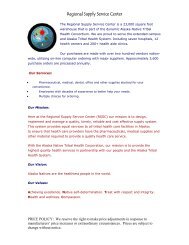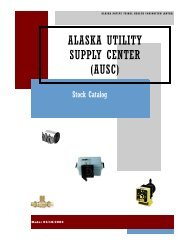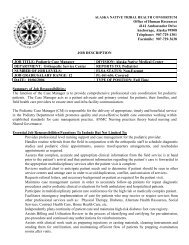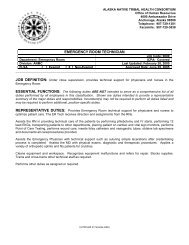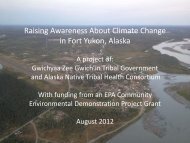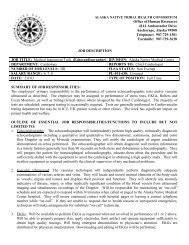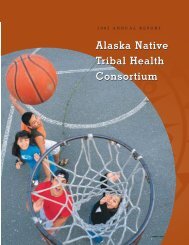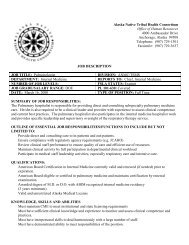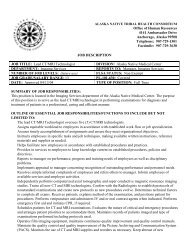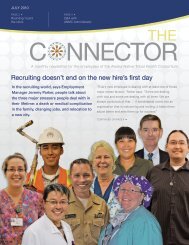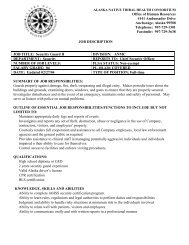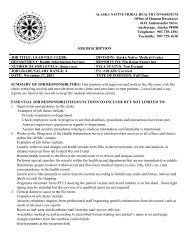Draft Final Climate Change and Health Impacts Point ... - ANTHC
Draft Final Climate Change and Health Impacts Point ... - ANTHC
Draft Final Climate Change and Health Impacts Point ... - ANTHC
Create successful ePaper yourself
Turn your PDF publications into a flip-book with our unique Google optimized e-Paper software.
<strong>and</strong> a major cause of disability. Along with associated risk factors such as obesity, glucose intolerance,<br />
diabetes, <strong>and</strong> hypertension, the rate of cardiovascular disease is increasing among Alaska Natives.<br />
Multiple studies associate cardiovascular disease among Alaska Natives with increased intake of<br />
nontraditional foods (Murphy et al., 1995; Nobmann et al., 2005; Stang et al., 2005). Alaska Natives have<br />
also been increasingly exposed to social <strong>and</strong> environmental risk factors such as tobacco use, <strong>and</strong><br />
transition to lifestyles that are less physically active (Eberhart‐Phillips et al., 2003). People that continue<br />
to live a traditional subsistence lifestyle are generally at lower risk for cardiovascular disease.<br />
Mental <strong>Health</strong>: The World <strong>Health</strong> Organization defines mental health as "a state of well‐being in which<br />
the individual realizes his or her own abilities, can cope with the normal stresses of life, can work<br />
productively <strong>and</strong> fruitfully, <strong>and</strong> is able to make a contribution to his or her community” (WHO, 2005).<br />
Alaska Natives experience high rates of mental health problems including anxiety, depression, assault,<br />
suicide, drug <strong>and</strong> alcohol abuse, <strong>and</strong> domestic violence.<br />
Causal factors may include rapid cultural change (Curtis et al., 2005) <strong>and</strong> the sense of profound loss of<br />
past social, cultural, <strong>and</strong> environmental conditions (Albrecht et al. 2006). Another factor is distress from<br />
threats to one’s community, environment, or way of life. Until the threat is removed, people respond<br />
emotionally, based upon their coping abilities (Luginaah et al., 2002).<br />
<strong>Climate</strong> change can generate stress <strong>and</strong> fear related to the safety <strong>and</strong> security of family, home, <strong>and</strong><br />
community. <strong>Change</strong>s in wildlife, habitat, l<strong>and</strong>scape, weather, traditional practices, <strong>and</strong> cultural sites<br />
among others areas, may compound existing concerns. <strong>Climate</strong> change may also increase competition<br />
for limited resources, affecting interpersonal <strong>and</strong> intergroup behavior (American Psychological<br />
Association, 2009).<br />
OBSERVATIONS AND FINDINGS<br />
This section provides a summary of the findings based on the seven categories deemed relevant to the<br />
Maniilaq Area. For each category a summary is provided of the observations reported by <strong>Point</strong> Hope<br />
residents, as well as data acquired from local sources, published studies, government records, or<br />
experts.<br />
At the top of each section, a short list is provided summarizing Observed <strong>Change</strong>s, <strong>Health</strong> Concerns, <strong>and</strong><br />
Potential Adaptation, measures. Where possible, “Projected Future <strong>Change</strong>” has been provided based<br />
on observed or measured trends, projections, or climate models.<br />
13



